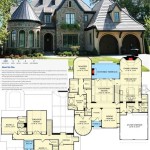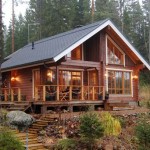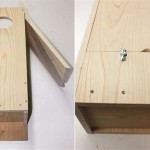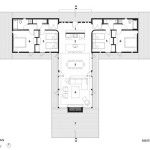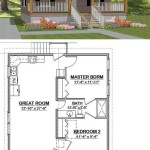Bird House Building Plans provide detailed instructions and diagrams for constructing a structure specifically designed to attract, accommodate, and protect wild birds. These plans offer guidance on essential factors such as the type of bird species to be attracted, the materials required, the size and shape of the house, and the placement of the structure in an appropriate habitat.
Building bird houses can be a rewarding endeavor for bird enthusiasts, conservationists, and DIY enthusiasts alike. By providing a safe and suitable nesting site, bird houses can support local bird populations and encourage their presence in gardens, parks, and other outdoor spaces. In turn, birds play a vital role in the ecosystem by controlling insect populations, pollinating plants, and dispersing seeds.
In the following sections, we will explore the key elements of Bird House Building Plans, including the types of bird houses, the materials used in their construction, and the specific requirements for different bird species. We will also provide step-by-step instructions for building a basic bird house, as well as tips and considerations for ensuring the success and longevity of your bird house.
Consider these important factors when using Bird House Building Plans:
- Choose the right bird species
- Select appropriate materials
- Determine correct size and shape
- Provide proper ventilation
- Ensure drainage and protection
- Choose a suitable location
- Consider maintenance and cleaning
- Avoid using harmful materials
- Follow instructions carefully
- Enjoy the birds!
Remember, by providing a safe and suitable nesting site, you can support local bird populations and encourage their presence in your outdoor spaces.
Choose the right bird species
The first step in building a bird house is to choose the right bird species. This will determine the size, shape, and location of the house. There are many different types of birds that can use bird houses, so it is important to do some research to find out which species are common in your area and which ones are likely to use a bird house.
Once you have chosen a bird species, you need to learn about its specific nesting requirements. This includes the size and shape of the house, the type of entrance hole, and the height at which the house should be placed. You can find this information in bird books, online resources, or by contacting your local wildlife rehabilitator.
It is also important to consider the bird’s diet when choosing a bird house. Some birds, such as bluebirds, eat insects, while others, such as cardinals, eat seeds. The type of food that the bird eats will determine the size and shape of the entrance hole.
Finally, you need to make sure that the bird house is placed in a safe location. The house should be protected from predators, such as cats and squirrels, and it should be placed in a spot that gets plenty of sunlight.
By following these tips, you can choose the right bird species for your bird house and ensure that it is a safe and welcoming place for birds to nest.
Select appropriate materials
The materials you choose for your bird house will depend on a number of factors, including the climate in your area, the type of bird you are trying to attract, and your budget.
Some of the most common materials used to build bird houses include:
- Wood – Wood is a good choice for bird houses because it is durable, relatively inexpensive, and easy to work with. However, wood can rot and warp over time, so it is important to choose a wood that is weather-resistant, such as cedar, redwood, or cypress.
- Plastic – Plastic is another good choice for bird houses because it is durable, weather-resistant, and easy to clean. However, plastic can be more expensive than wood, and it can fade over time.
- Metal – Metal is a good choice for bird houses because it is durable and weather-resistant. However, metal can be more difficult to work with than wood or plastic, and it can get very hot in the sun.
In addition to the materials listed above, you may also want to consider using other materials, such as:
- Hardware cloth – Hardware cloth can be used to create a mesh screen over the entrance hole of the bird house. This will help to keep out predators, such as cats and squirrels.
- Asphalt roofing shingles – Asphalt roofing shingles can be used to cover the roof of the bird house. This will help to protect the house from the elements.
- Paint – Paint can be used to add a touch of color to the bird house. However, it is important to use a paint that is non-toxic and safe for birds.
By choosing the right materials, you can build a bird house that will last for many years and provide a safe and comfortable home for birds.
Paragraph after details:
When selecting materials for your bird house, it is important to keep in mind the following factors:
- The climate in your area
- The type of bird you are trying to attract
- Your budget
By considering these factors, you can choose the materials that are best suited for your needs.
Determine correct size and shape
The size and shape of the bird house will depend on the type of bird you are trying to attract. Different species of birds have different nesting requirements, so it is important to do some research to find out what size and shape of house is best for the birds in your area.
In general, smaller birds, such as chickadees and wrens, prefer smaller houses, while larger birds, such as bluebirds and woodpeckers, prefer larger houses. The size of the house will also depend on the number of birds that you want to attract. If you want to attract a family of birds, you will need a larger house than if you are only trying to attract a single bird.
The shape of the house is also important. Some birds, such as bluebirds, prefer houses that are tall and narrow, while other birds, such as wrens, prefer houses that are short and wide. The shape of the house will also affect the type of entrance hole that you need to create.
In addition to the size and shape of the house, you also need to consider the height at which the house will be placed. The height of the house will depend on the type of bird you are trying to attract. Some birds, such as bluebirds, prefer houses that are placed high off the ground, while other birds, such as wrens, prefer houses that are placed closer to the ground.
By considering the size, shape, and height of the bird house, you can create a house that is attractive to the birds in your area and that will provide them with a safe and comfortable place to nest.
Paragraph after details:
When determining the correct size and shape for your bird house, it is important to keep in mind the following factors:
- The type of bird you are trying to attract
- The number of birds you want to attract
- The height at which the house will be placed
By considering these factors, you can choose the size and shape of the bird house that is best suited for your needs.
Provide proper ventilation
Proper ventilation is essential for the health of the birds that will use your bird house. Without adequate ventilation, the house can become too hot and humid, which can lead to respiratory problems and other health issues for the birds. Ventilation also helps to prevent the build-up of moisture, which can cause the house to rot and become uninhabitable.
There are a few different ways to provide proper ventilation in a bird house. One way is to create vents in the sides of the house. These vents should be small enough to prevent predators from entering the house, but large enough to allow air to circulate. Another way to provide ventilation is to use a mesh screen over the entrance hole. This will allow air to circulate while keeping predators out.
In addition to vents and mesh screens, you can also provide ventilation by placing the bird house in a location that gets plenty of airflow. This will help to keep the house cool and dry, and it will also make it less attractive to predators.
By providing proper ventilation, you can help to ensure that the birds that use your bird house are healthy and comfortable.
Paragraph after details:
When providing proper ventilation for your bird house, it is important to keep in mind the following factors:
- The size and location of the vents
- The type of mesh screen used
- The location of the bird house
By considering these factors, you can provide proper ventilation for your bird house and ensure that the birds that use it are healthy and comfortable.
Ensure drainage and protection
In addition to providing proper ventilation, it is also important to ensure that your bird house has adequate drainage and protection from the elements.
- Drainage – Drainage is important to prevent water from accumulating in the bottom of the bird house. This can lead to rot and mildew, which can make the house uninhabitable for birds. To ensure proper drainage, make sure that the floor of the bird house is sloped slightly downward towards the entrance hole. You can also create drainage holes in the floor of the house.
- Protection from the elements – Your bird house should also be protected from the elements, such as rain, snow, and wind. To protect the house from rain, make sure that the roof overhangs the sides of the house and that there are no cracks or holes in the roof. To protect the house from snow, make sure that the roof is sloped to allow snow to slide off easily. To protect the house from wind, make sure that the house is securely attached to a post or tree.
By ensuring proper drainage and protection, you can help to extend the life of your bird house and make it a more comfortable place for birds to nest.
Choose a suitable location
Choosing a suitable location for your bird house is important to ensure that the birds that use it are safe and comfortable. Here are a few things to consider when choosing a location:
- Protection from predators – Place the bird house in a location that is protected from predators, such as cats, squirrels, and snakes. This means choosing a location that is at least 5 feet off the ground and away from any branches or other objects that predators can use to climb up to the house.
- Protection from the elements – Place the bird house in a location that is protected from the elements, such as rain, snow, and wind. This means choosing a location that is under a tree or other overhang, or that is facing away from the prevailing wind.
- Access to food and water – Place the bird house in a location that is close to a source of food and water. This will make it easier for the birds that use the house to find food and water, and it will also help to attract more birds to the area.
- Privacy – Place the bird house in a location that is private and away from human activity. This will help to make the birds that use the house feel safe and secure.
By considering these factors, you can choose a suitable location for your bird house and ensure that the birds that use it are safe and comfortable.
Consider maintenance and cleaning
Once you have built your bird house, it is important to maintain and clean it regularly. This will help to keep the house in good condition and prevent it from becoming a health hazard for the birds that use it.
Here are a few tips for maintaining and cleaning your bird house:
- Inspect the bird house regularly – Inspect the bird house regularly for any damage, such as cracks or holes. Repair any damage promptly to prevent the house from becoming uninhabitable for birds.
- Clean the bird house annually – Clean the bird house annually to remove any nesting material, droppings, or other debris. To clean the house, remove the roof and use a brush or vacuum cleaner to remove any debris. You can also wash the house with a mild soap and water solution.
- Disinfect the bird house every few years – Disinfect the bird house every few years to kill any bacteria or parasites that may be present. To disinfect the house, use a bleach solution (1 part bleach to 10 parts water). Apply the bleach solution to the house and let it sit for 10 minutes. Then, rinse the house thoroughly with water.
By following these tips, you can help to keep your bird house in good condition and provide a safe and healthy environment for the birds that use it.
Paragraph after details:
Maintaining and cleaning your bird house is an important part of responsible birdwatching. By following these tips, you can help to ensure that your bird house is a safe and healthy place for birds to nest.
Avoid using harmful materials
When building a bird house, it is important to avoid using harmful materials that could pose a health risk to the birds that use it. Some materials, such as treated lumber, paint, and certain types of sealants, can contain harmful chemicals that can be toxic to birds. These chemicals can be ingested by birds when they preen their feathers or eat insects that have come into contact with the chemicals. They can also be absorbed through the skin if the birds come into direct contact with the materials.
- Treated lumber – Treated lumber is often used for outdoor projects because it is resistant to rot and decay. However, the chemicals used to treat the lumber can be harmful to birds. These chemicals can leach out of the wood and into the soil, where they can be ingested by birds that eat insects or seeds that have come into contact with the soil. Birds can also be exposed to these chemicals if they chew on the wood or if they build their nests in trees that have been treated with these chemicals.
- Paint – Paint can also be harmful to birds, especially if it contains lead or other toxic chemicals. Lead is a particularly dangerous toxin for birds, and even small amounts can cause serious health problems, including neurological damage and death. Birds can be exposed to lead paint if they ingest paint chips or if they build their nests in painted structures.
- Sealants – Sealants are often used to protect wood from the elements. However, some sealants contain harmful chemicals that can be toxic to birds. These chemicals can leach out of the sealant and into the environment, where they can be ingested by birds or absorbed through their skin. Birds can also be exposed to these chemicals if they build their nests in structures that have been sealed with these products.
- Other harmful materials – In addition to treated lumber, paint, and sealants, there are a number of other materials that can be harmful to birds. These materials include:
- Plastic
- Metal
- Glass
- Fabric
These materials can be harmful to birds if they are ingested, if they come into contact with the birds’ skin, or if they block the birds’ access to food and water.
It is important to avoid using these materials when building a bird house. By using safe materials, you can help to protect the birds that use your bird house from harm.
Follow instructions carefully
Once you have chosen a bird house building plan, it is important to follow the instructions carefully. This will help to ensure that your bird house is built correctly and that it is safe for the birds that will use it.
- Read the instructions carefully before you begin. This will help you to understand the steps involved in building the bird house and to identify any potential problems.
- Gather all of the materials that you will need. This will help to prevent you from having to stop in the middle of the project to find a missing material.
- Follow the instructions step-by-step. Do not skip any steps, as this could compromise the structural integrity of the bird house.
- Check your work as you go. This will help you to identify any errors and to correct them before they become a bigger problem.
By following the instructions carefully, you can build a bird house that is sturdy, safe, and attractive. This will provide a much-needed home for the birds in your area and will help to support the local bird population.
Enjoy the birds!
Once you have built your bird house and placed it in a suitable location, all that is left to do is enjoy the birds! Watching birds nesting and raising their young is a rewarding experience, and it can provide hours of entertainment.
- Observe the birds from a distance. Avoid getting too close to the bird house, as this could disturb the birds and cause them to abandon their nest. Use binoculars or a spotting scope to get a closer look at the birds and their activities.
- Keep the area around the bird house clean and free of debris. This will help to prevent predators from finding the nest and will make it easier for the birds to come and go.
- Be patient. It may take some time for birds to find and occupy your bird house. Don’t be discouraged if you don’t see any activity right away. Just keep watching and waiting, and eventually you will be rewarded with the sight of birds nesting and raising their young.
- Share your enjoyment with others. Invite friends and family to come and see the birds. Birdwatching is a great way to connect with nature and to learn more about the birds in your area.
Watching birds is a fun and rewarding hobby that can be enjoyed by people of all ages. By building a bird house and providing a safe and welcoming place for birds to nest, you can help to support the local bird population and bring the beauty of nature into your own backyard.










Related Posts

